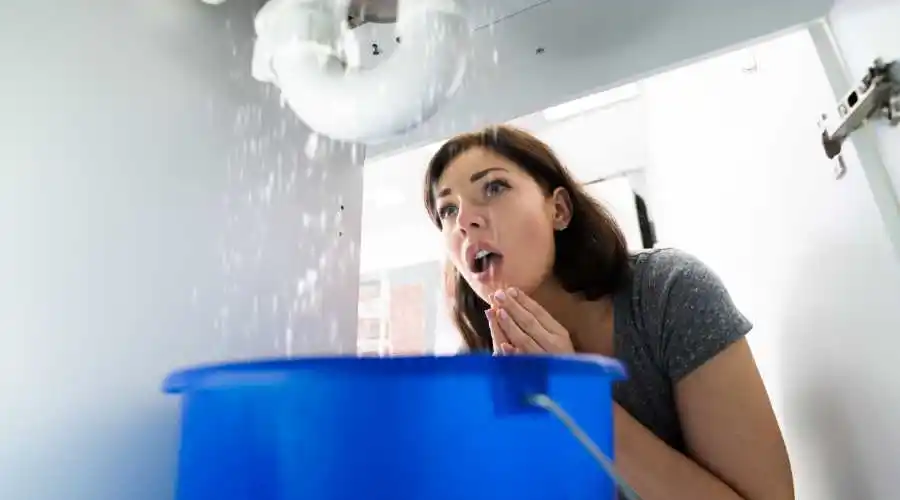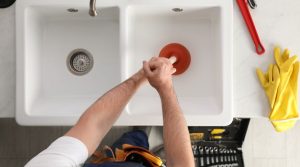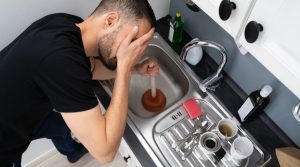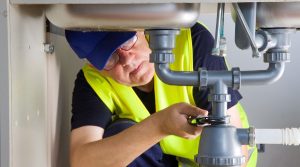Imagine this: a dripping faucet that won’t quit, a sink that’s mysteriously clogged, or perhaps a showerhead that just won’t cooperate. These everyday plumbing problems might leave you wondering, “Can I tackle this myself?” Well, while some minor plumbing issues can indeed be DIYed, it’s essential to tread carefully. Plumbing isn’t always as straightforward as it seems, and a well-intentioned DIY project can quickly turn into a plumbing nightmare.
So, let’s dive in and explore which common plumbing problems you can handle on your own and when it’s time to pick up the phone and call in the pros.
Understanding DIY Plumbing: What You Can and Can’t Fix
In the world of plumbing, DIYing isn’t always the best approach. When things go wrong during a DIY plumbing endeavor, you might find yourself facing even costlier repairs or, in the worst-case scenario, dealing with hazardous sewage backups. However, some straightforward tasks don’t require a plumbing expert’s touch. Let’s break it down:
Clogged Drains: Can You DIY It?
Mostly, yes! Dealing with a clogged drain is a common plumbing woe, and you can often resolve it yourself. Here’s how:
- Drain Plunger: Use a drain plunger (not the regular toilet plunger) to tackle sink clogs. Roll it onto the drain, fill the sink with water, and plunge away. The key is to create a good seal before you start.
- Plumbing Snake: If the plunger doesn’t work, a plumbing snake can be your hero. This tool has a flexible wire you can feed down the pipe to break up and remove the clog. You might need to remove the P-trap or drain to access the blockage. In a pinch, a bent coat hanger can also do the trick.
- Natural Solution: Say goodbye to harsh chemical drain cleaners! Instead, try a safe mixture of baking soda and vinegar. After a few moments, pour boiling water down the drain to help dislodge the clog.
- P-Trap Removal: As a last resort, you can manually remove the clog by following specific steps. But be cautious; this is a hands-on task that requires some basic plumbing skills.
Dripping Faucets: Can You DIY It?
Usually, yes! Fixing a dripping faucet is generally a DIY-friendly task. However, you need to figure out what’s causing the leak. The usual suspects are:
Worn-out sink cartridge: Most single or double-handle faucets have cartridges beneath the handles that control water flow. If these wear out, it can result in a persistent drip. In most cases, replacing a worn-out cartridge is as simple as shutting off the water, removing the faucet handle, and swapping in a new one. However, it’s a good idea to review the instructions and assess whether the job might be better suited for a professional. Some mistakes can lead to damaging the faucet.
Worn-out compression faucet washer: This small rubber or silicone washer is responsible for stopping the water flow when you turn off the faucet. It’s a bit more involved than changing a cartridge, but you can remove the handle, unscrew the nut, and replace the washer yourself.
If the issue seems more complicated, involving a damaged valve, water pressure problems, or a broken faucet, it’s time to call the nearest plumbing expert.
Kitchen Sink Installation: DIY or Not?
Not recommended. Installing a kitchen sink is not just about setting it in place. It often involves heavy plumbing work, adjustments, and potential risks to your countertops. If you need a new sink installed, rely on licensed professionals such as those from CBJ Plumbers. They can not only install the sink but also help you choose the best option to fit your space and needs.
Showerhead Installation: Can You DIY It?
It depends. If you’re merely replacing the showerhead with a similar type, then DIYing is a fairly straightforward task. Here’s a quick guide:
- Unscrew the old showerhead, either by hand or using a wrench.
- Remove the old seal tape and clean off the threads.
- Apply new seal tape around the threads.
- Screw on the new showerhead.
However, if you’re fully replacing the showerhead and arm or installing additional technology upgrades, it’s safer to call a plumber for assistance.
Toilet Replacement: Can You DIY It?
No. Replacing a toilet is a substantial task that involves heavy lifting and precise plumbing connections. An incorrectly installed toilet can lead to expensive damage to your plumbing system. With a plumbing professional, you can ensure that your toilet installation is done correctly, and any additional plumbing issues are identified before installation. Professional plumbers can also install additional features, such as bidets.
Gas Line Repair or Installation: DIY or Not?
Absolutely not. Anything related to gas lines should never, ever be a DIY project. Improper installation or repair attempts can result in a dangerous gas leak or even an explosion. For this reason, any type of gas line service always requires a licensed professional. Whether you need a new gas line installed or suspect an issue with an existing connection, it is advised to call your local plumber for gas line services.
Other DIY-Friendly Plumbing Problems
In addition to the common plumbing problems mentioned above, here are a few other issues you can probably fix yourself:
- Sink stopper adjustment
- Clogged toilet
- Toilet flapper fill valve replacement
- Disposal jam
- Pipe insulation
- Faucet aerator replacement
- Caulking around fixtures
- Faucet head cleaning
However, remember the golden rule: If you’re uncertain about tackling any plumbing issue or suspect a more significant problem is at play, it’s wise to call a plumbing professional. It’s better to be safe than sorry when it comes to your home’s plumbing.
When dealing with most plumbing issues, don’t take unnecessary risks. Avoid the potential for costly repairs or water damage by relying on the licensed professionals at CBJ Plumbers. You can reach us at 973-601-5593 or conveniently book an appointment online.
Remember, a successful DIY plumbing project can be rewarding, but when in doubt, let the experts handle it. Your plumbing and your peace of mind are worth it. Don’t hesitate to reach out to CBJ Plumbers for all your plumbing needs.





